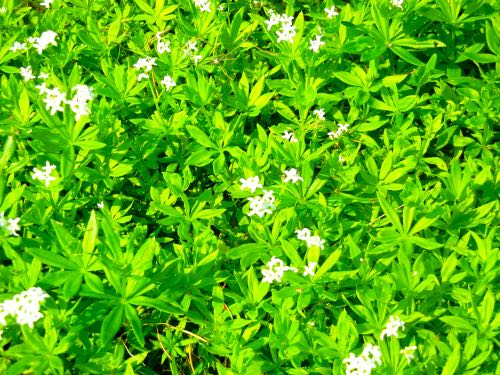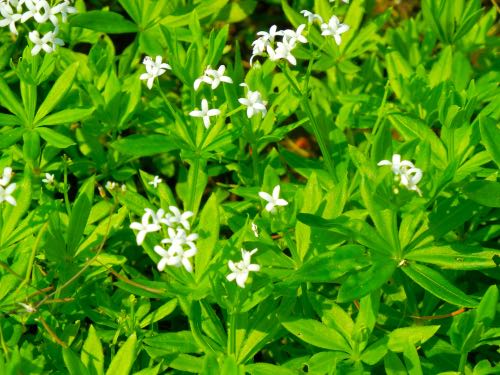Asperula odorata: A Fragrant Ground Cover
Woodruff, scientifically known as Asperula odorata or Galium odoratum, is a delightful herbaceous perennial that serves as a fragrant ground cover. Belonging to the Rubiaceae family of plants, Woodruff is native to Europe, Russia, Western Siberia, Caucasus, Iran, China, and Japan. Its charming presence, coupled with its historical significance in herbal medicine, has made it a beloved addition to gardens and landscapes.
Characteristics and Description
Woodruff, also referred to as Sweet Woodruff or Wild Baby’s Breath features lanceolate and glabrous leaves that exude a pleasant coumarin scent. In late spring and early summer, the plant produces delicate white flowers in cymes, with each flower boasting four petals joined together at the base. Notably, Woodruff produces seeds covered in tiny bristles, facilitating their dispersal by attaching themselves to passing objects.
Origin, Native Habitat, and Historical Uses
Asperula odorata finds its origins in the woodlands and shaded areas of its native habitats. Its cultural significance can be traced back to the Middle Ages when it was commonly used in herbal medicine. The plant’s leaves were utilized for their medicinal properties, contributing to the preparation of herbal remedies. Its coumarin-scented foliage also found its way into culinary applications, imparting a unique flavor to beverages like wine in Germany and traditional Georgian drinks called Tarhun.
How to Care for and Maintain Asperula odorata
Growing Woodruff in your garden or landscape requires attention to its specific needs. Below are the key factors to consider for successful cultivation:
Light Requirements: Asperula odorata thrives in partial to full shade conditions, making it an excellent choice for shaded areas or woodland gardens.
Soil and Moisture: Plant Woodruff in rich, moist soil that offers good drainage. Ensure the soil remains consistently moist, particularly in hotter climates, to prevent the plant from drying out.
Propagation: Asperula odorata can be propagated through division. Simply divide the plant into smaller sections, ensuring each section has sufficient roots, and replant them in desired locations.
Fragrant Applications: Harvest Woodruff’s leaves to enjoy their pleasant fragrance, even when dried. The dried leaves can be used in potpourri to add a delightful scent to your home.

Additional Synonyms: A Tapestry of Names
Woodruff, with its captivating allure, embraces a tapestry of names that reflect its diverse cultural and regional associations. In addition to its primary scientific names, Asperula odorata and Galium odoratum, Woodruff is known by various other synonyms. These include Galium matrisylva, Asperula odora, Chlorostemma odoratum, Asperula matrisylva, Asperula zangezurensis, Asterophyllum asperula, Asterophyllum sylvaticum, Asperula eugeniae, and Galium odoratum var. eugeniae. Each synonym contributes to the rich tapestry of history and botanical heritage surrounding this enchanting plant.
Discover the Enchanting Woodruff: Asperula odorata Unveiled
Woodruff or Asperula odorata, with its fragrant aroma and captivating beauty, adds a touch of elegance to any garden or landscape. Whether used as a ground cover or enjoyed for its aromatic leaves, this versatile plant continues to be cherished by gardeners and plant enthusiasts around the world.




